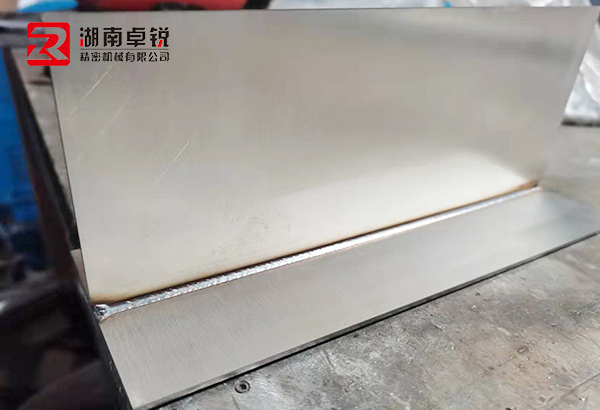Today, the chassis and cabinet Sheet Metal Processing editor will take you to understand the industry standards for sheet metal processing.
The industry standards for sheet metal processing mainly include the following aspects:
 Accuracy level and dimensional tolerance: The accuracy level of sheet metal processing is usually divided into A level, B level, and C. These levels correspond to the JISB2201 standard. The dimensional tolerance shall comply with the provisions of GB/T9124-1988 "Shape and Position Tolerance".
Accuracy level and dimensional tolerance: The accuracy level of sheet metal processing is usually divided into A level, B level, and C. These levels correspond to the JISB2201 standard. The dimensional tolerance shall comply with the provisions of GB/T9124-1988 "Shape and Position Tolerance".
Surface roughness: The surface roughness of various types of sheet metal should be executed according to the provisions in Table 1.
Bending degree: The bending degree of metal sheet shall not exceed 0.1% of the corresponding external dimensions of the parts.
Bending requirements: When bending metal sheets, the distance between each point on the outer edge of the opening should not exceed 0.3d; When bending without welding, the distance between the inner edge of the opening and the inner hole wall should not exceed 0.5d.
Groove treatment: When the thickness of the metal sheet is less than 6mm or greater than 25mm, groove treatment should be carried out.
Straightness and perpendicularity: The allowable deviations for straightness and perpendicularity of asymmetric thin plates with a thickness between 10-15mm and no reinforcing ribs are 0.2d and 1.0d, respectively; When the symmetry of rectangular plates with a thickness between 16 and 30mm is poor, it is advisable to use single-sided drawing method for manufacturing.
Test method for non-metallic materials: The tensile test method for non-metallic materials should comply with the relevant provisions of GB/T1392-1993 "Tensile Test Method for Metallic Materials at Room Temperature".
In addition, sheet metal processing also includes standards for multiple process steps, such as CNC cutting, CNC punching, CNC bending, welding, spraying, packaging, labeling, etc. Xiangtan Zhuorui Precision Machinery Co., Ltd. specializes in sheet metal processing, laser cutting, numerical punching processing, CNC bending, sheet metal shell processing, welding processing, as well as various communication equipment cabinets, chassis, industrial electromechanical equipment supporting EMAR cabinets, control cabinets, consoles, pressure furnace welding, railway locomotive parts welding processing, and complete sets of electrical control system assembly. Welcome everyone to consult.


 Spanish
Spanish Arabic
Arabic Spanish Basque
Spanish Basque Portuguese
Portuguese Belarusian
Belarusian Japanese
Japanese Russian
Russian Icelandic
Icelandic Bulgarian
Bulgarian Azerbaijani
Azerbaijani Estonian
Estonian Irish
Irish Polish
Polish Persian
Persian Boolean
Boolean Danish
Danish German
German French
French Filipino
Filipino Finnish
Finnish Korean
Korean Dutch
Dutch Galician
Galician Catalan
Catalan Czech
Czech Croatian
Croatian Latin
Latin Latvian
Latvian Romanian
Romanian Maltese
Maltese Malay
Malay Macedonian
Macedonian Norwegian
Norwegian Swedish
Swedish Serbian
Serbian Slovak
Slovak Slovenian
Slovenian Swahili
Swahili Thai
Thai Turkish
Turkish Welsh
Welsh Urdu
Urdu Ukrainian
Ukrainian Greek
Greek Hungarian
Hungarian Italian
Italian Yiddish
Yiddish Indonesian
Indonesian Vietnamese
Vietnamese 简体中文
简体中文 Haitian Creole
Haitian Creole








